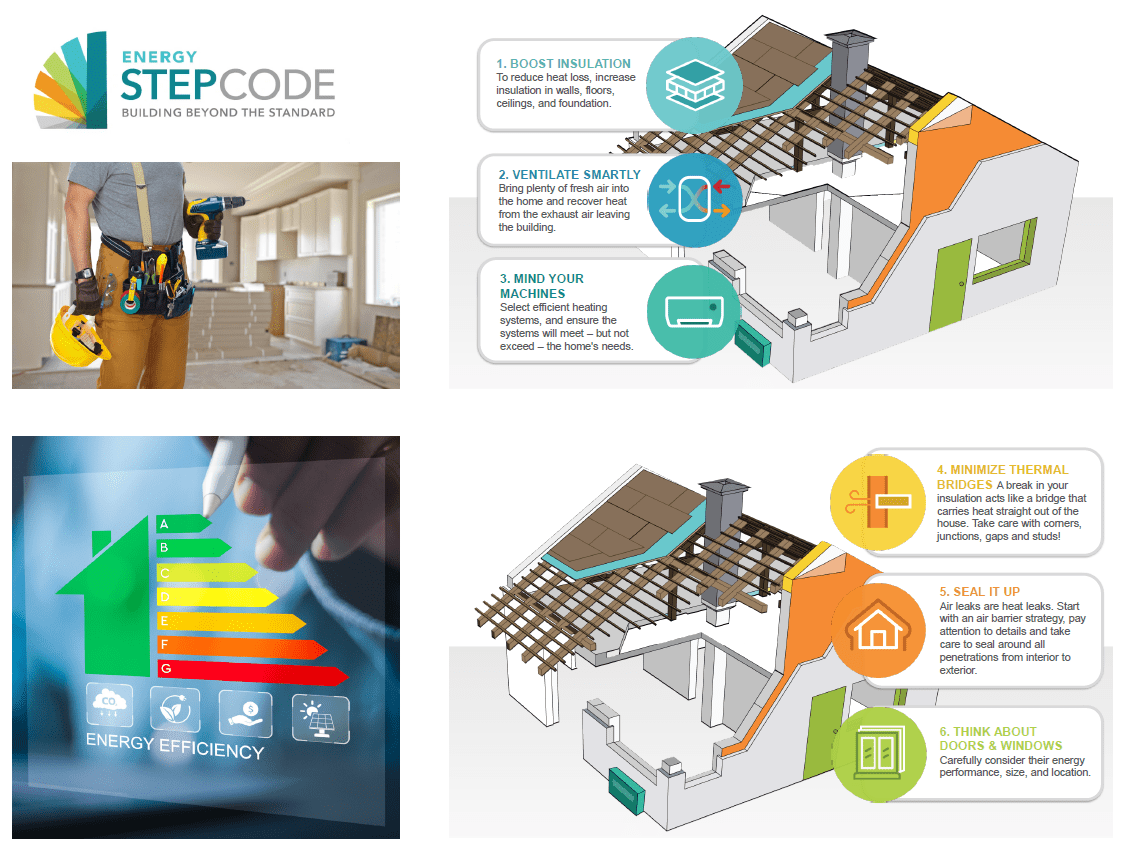BC Energy Step Code 4
Building for Efficiency and Sustainability
Understanding BC Energy Step Code 4
The BC Energy Step Code is a progressive standard that establishes performance targets for energy efficiency in new construction projects. Step Code 4 represents a significant advancement in sustainable building practices, requiring developers to meet stringent requirements aimed at reducing energy consumption and minimizing environmental impact.

1. Boost Insulation
Step Code 4 mandates increased insulation in walls, floors, ceilings, and foundations to reduce heat loss. By enhancing thermal resistance, buildings can better retain heat in the winter and maintain cooler temperatures in the summer, resulting in improved energy efficiency and lower utility costs.
2. Ventilate Smartly
Proper ventilation is essential for maintaining indoor air quality and regulating moisture levels. Step Code 4 emphasizes the importance of bringing fresh air into the home while also recovering heat from the exhaust air leaving the building. This balanced approach ensures optimal comfort and health for occupants while minimizing energy waste.
3. Mind Your Machines
Selecting efficient heating systems is crucial for meeting the energy demands of a home without excessive energy consumption. Step Code 4 encourages developers to choose heating systems that are appropriately sized for the home’s needs, avoiding unnecessary energy expenditure while still providing optimal comfort for residents.
4. Minimize Thermal Bridges
Thermal bridges are areas in a building’s envelope where insulation is interrupted, allowing heat to escape more easily. Step Code 4 requires careful attention to detail during construction to minimize thermal bridges, such as corners, junctions, gaps, and studs. By reducing these pathways for heat loss, buildings can achieve higher levels of energy efficiency.
5. Seal It Up
Air leakage is a common source of energy waste in buildings, allowing heated or cooled air to escape and outdoor air to infiltrate. Step Code 4 emphasizes the importance of air sealing strategies to minimize air leaks, starting with a comprehensive air barrier strategy and sealing around all penetrations from the interior to the exterior. By sealing up these gaps, buildings can maintain a more consistent indoor temperature and reduce energy consumption.
6. Think About Doors & Windows:
Doors and windows play a significant role in a building’s energy performance, influencing both heat gain and heat loss. Step Code 4 encourages developers to carefully consider the energy performance of doors and windows, selecting products with high thermal resistance and proper sizing and placement. By choosing energy-efficient doors and windows, buildings can minimize energy loss and maximize comfort for occupants.
In summary, BC Energy Step Code 4 sets a high standard for energy efficiency and sustainability in new construction projects, requiring developers to implement a range of measures to minimize energy consumption, reduce environmental impact, and create healthier, more comfortable living spaces. By following the guidelines outlined in Step Code 4, builders can contribute to a more sustainable future while providing high-quality homes for residents.
